Are you looking for a three days in Iceland in winter itinerary?
You’re in luck – if you want a long weekend in Iceland in November, December, January, February or March, this full guide will show you exactly how to plan a trip there, what to do when you’re there and offer some valuable tips for visiting this sub-Arctic country in the coldest season.
I recently spent a wonderful three days in Iceland in January, and while it was very cold (we felt temperatures down to -16C, which is cold even for Iceland) and dark (the sun rose at around 11:00 am), the golden sunrises and sunsets, snowy landscapes and Nordic culture that’s vibrant even on the darkest days made it an incredible winter break.
Here’s a full itinerary for your long weekend in Iceland in winter, including what to do, where to stay, links to tours and hotels to book and whether it’s worth doing a package deal!
Is Iceland worth visiting in winter?

YES, Iceland is without a doubt worth visiting in the winter months. The daylight hours may be short, but you’ll still be able to enjoy the urban attractions of Reykjavik city, natural wonders like the famous waterfalls on the Golden Circle and the blue waters of geothermal pools!
When you visit Iceland in the winter, you can soak in glorious sunrises and sunsets that last well over an hour, see the bright white snow in the stunning winter sunlight, crunch in the snow while taking in the city lights and warm up in warm swimming pools when the weather conditions are far below freezing!
What’s the weather like in Iceland in the winter season?

I’m not going to pretend Iceland is warm in the winter months – it’s freezing!
The weather usually hovers around -5°C (23°F) to 5°C (41°F), and the days can range from rainy, to snowy, to crisp and bright!
I was lucky when I was in Iceland in January – the weather was clear and sunny every day, but the temperatures were immensely low – it got to -12°C (10°F) and we had lots of snow in Reykjavik city centre, and it was -18°C (-0.4°F) in Thingvellir National Park!
Basically, expect cold temperatures, but check the weather forecast before you go, and be mindful that any kind of precipitation – including drizzle, downpours, light and heavy snow could happen. Or, it could be perfectly dry!

Do also consider hours of daylight. When I visited Reykjavik in the middle of January, the sun rose just before 11:00 am (although it got light just before 10:00 am) and set again at about 3:30 pm (although it would stay light until about 4:30 pm).
This didn’t impact our trip at all – the Golden Circle tour was planned to maximise the daylight hours, and you can enjoy the cultural attractions of Reykjavik and surrounding areas in light and dark, PLUS we got to witness amazing sunrises and sunsets and gorgeous low-lying winter light.
However, do bear in mind all of this if you want to do a self-drive trip or want a little more daylight. Although March is at the end of winter, it sees a lot more daylight, with the sun rising at around 07:47 am in mid-March and not setting until 19:28.
Three days in Iceland in winter itinerary
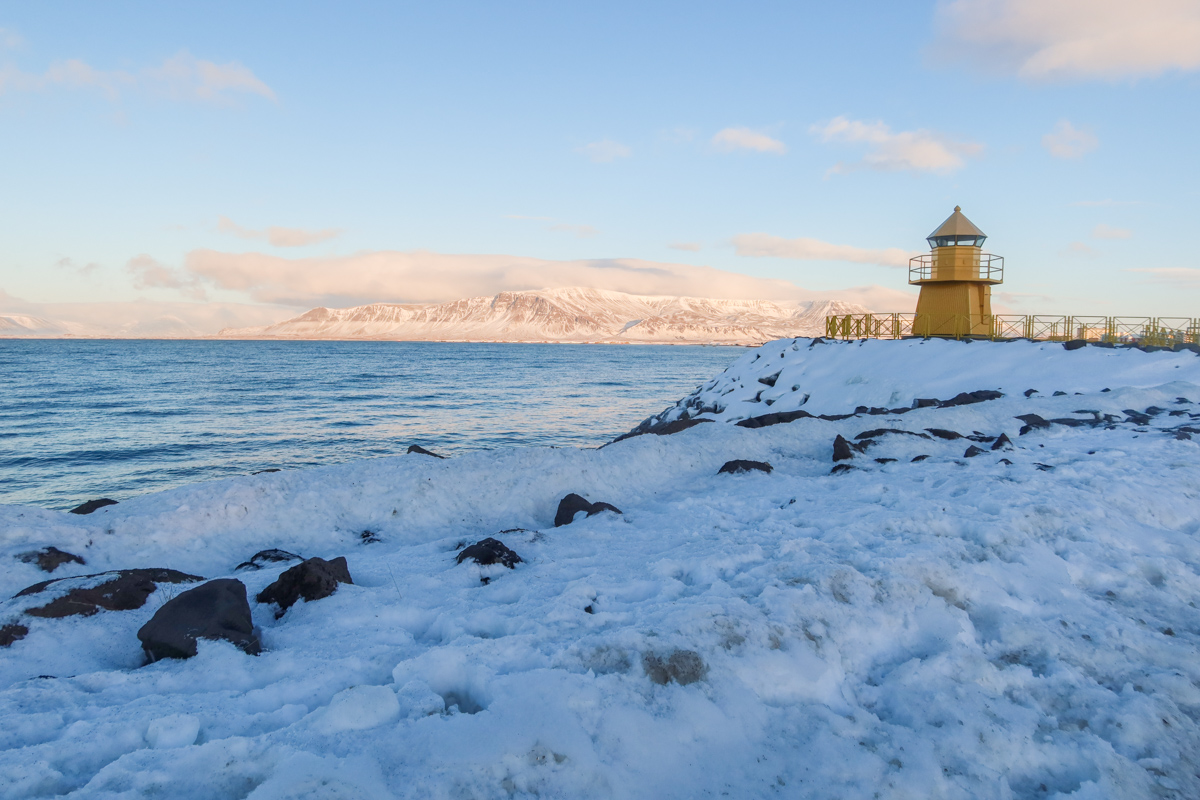
Here’s what this three days in Iceland in winter itinerary contains:
- Tips on how to get to Reykjavik + where to stay
- Day One: Golden Circle tour and northern lights
- Day Two: Reykjavik’s Museum of Iceland, Perlan and Blue Lagoon (or Sky Lagoon)
- Day Three: Lauguardaslag, Statues and Sculptures Walk, Hallgrimskirkja, Reykjavik Walking Tour and more museums
It also has a couple of options if you’d rather do another different tour while you’re here.
How to get to Iceland in winter

The most popular way to get to Iceland in winter is, by far, to fly.
Flights depart from all over Europe and North America to Keflavik International Airport, with airlines like Iceland Air, Play and Easy Jet landing at the airport.
Iceland Air is a great airline, with very safe flights, lots of legroom and a flight entertainment package. However, EasyJet and Play offer more budget-friendly flights.
Once you land in the airport, hop on the Fly Bus – a coach service that connects the airport with the city centre.
You can often book this while you’re reserving your plane ticket, or arrange it with Get Your Guide by clicking here.

Some people do rent a car and drive in Iceland in the winter, but I wouldn’t necessarily recommend this due to the amount of potential ice on the road, plus the fact that snow blizzards are always a possibility.
Of course, if you have experience driving in snowy conditions and feel comfortable, this is an option – but we found it quite easy to pass three days in Iceland in winter just by taking guided tours and exploring Reykjavik.
How to get around Iceland in the winter months
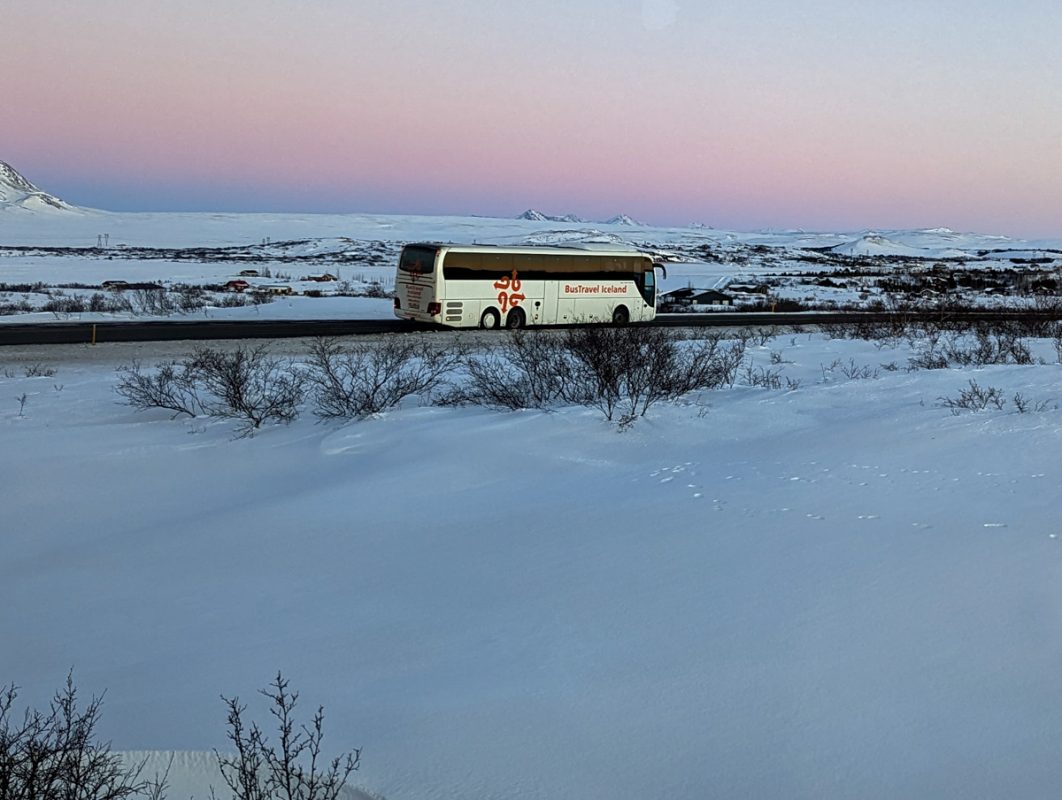
Most tourists rent cars when they visit Iceland, but you might not want to drive on icy roads in the winter season.
The main roads are generally gritted well in the winter season, but car parks and less busy roads can be much icier.
If you don’t want to drive, I recommend doing guided tours.
You can do a range of tours in Iceland throughout the cooler months, including visiting the Golden Circle, South Iceland, glaciers and the Thingvellir National Park.
To travel around Reykjavik, you have a few options:

- Drive (if you have a hire car): although bear in mind that the roads can be quite congested with traffic
- Take the bus: you can download the KLAPPID app to buy bus tickets, which you can then scan when you get on board the bus
- Walk: most of Reykjavik is very easily walkable, even in snowier conditions! If you walk, you might want to take hiking shoes, crampons or walking poles.
Package holidays or independent?
For your three-day Iceland winter trip, you can choose to book a package holiday or arrange all the components independently.
If you book a package holiday, you’ll arrange flights (usually with Iceland Air), your hotel and a couple of excursions when you book.
You’ll need to pay extra for other excursions (which I recommend you book separately on Get Your Guide, as it’s cheaper than buying individual attractions from Iceland Air).
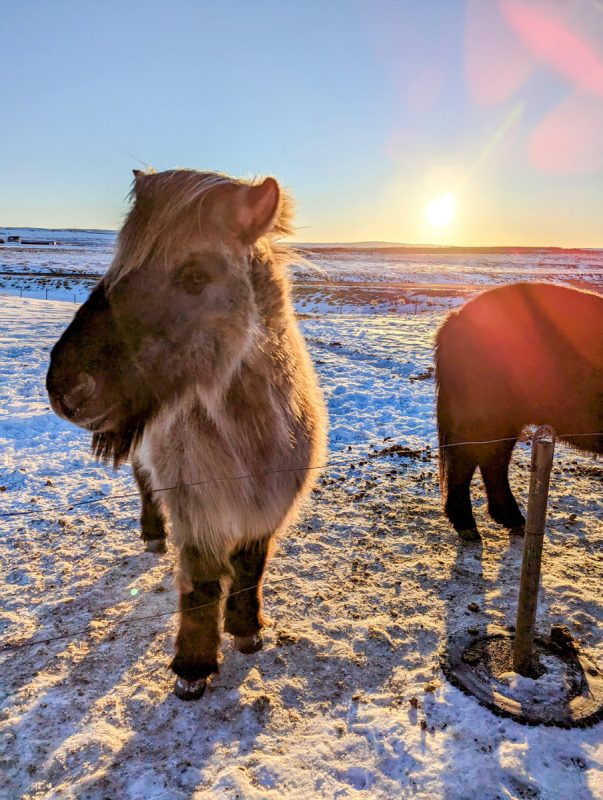
Generally, booking a package can be more convenient, but it’s important to be fully aware of what’s included in it.
There are also limited accommodation options available in the package (if you look at Booking.com you’ll see that there are tons of options to book independently!), and booking independently is usually quite a lot cheaper.
Here’s my full review of the Iceland Air vacation package holidays. TUI also offer packages.
Where to stay in Iceland in winter
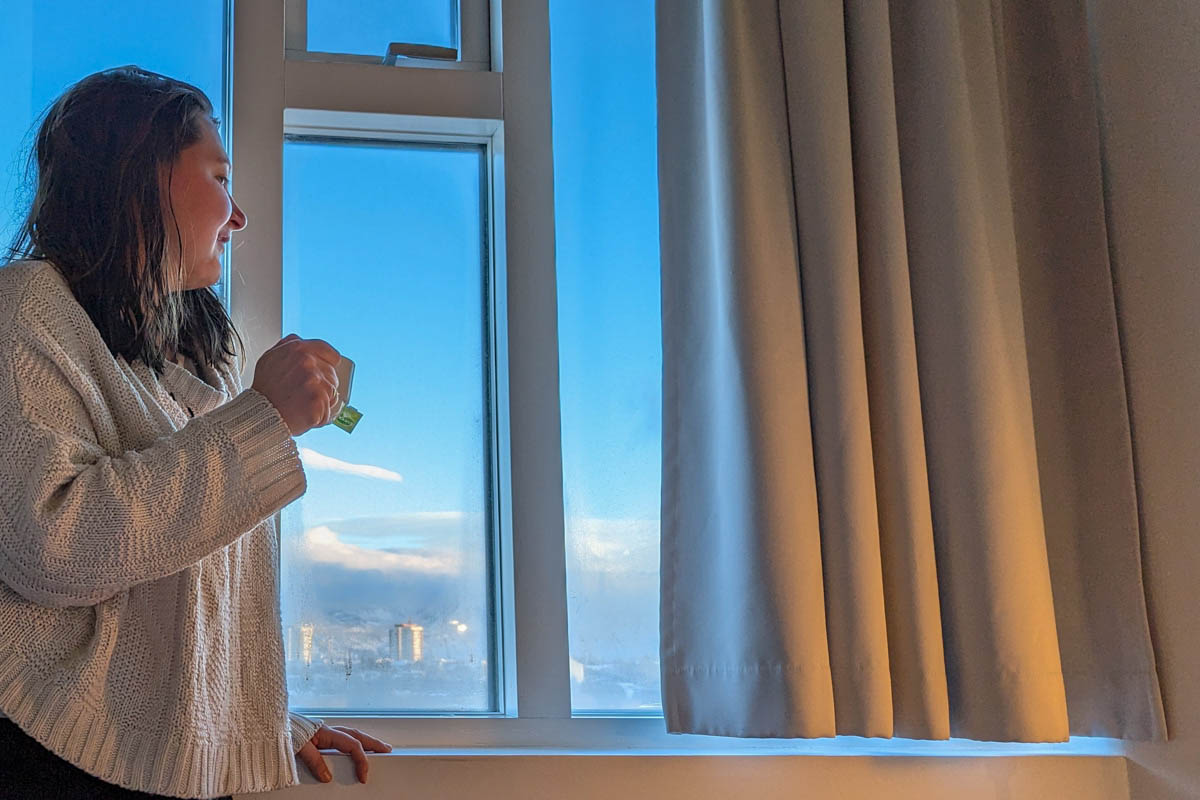
So, you’ve booked your flight and your transfer to the city centre, but where exactly are you staying?
If you’re just staying in Iceland for three days, I’d definitely recommend basing yourself in Reykjavik. It’s where most tours leave from, and the city centre has lots to enjoy too.
Here are. a few of the best hotels and accommodations:
Reykjavik Lights by Kea Hotels
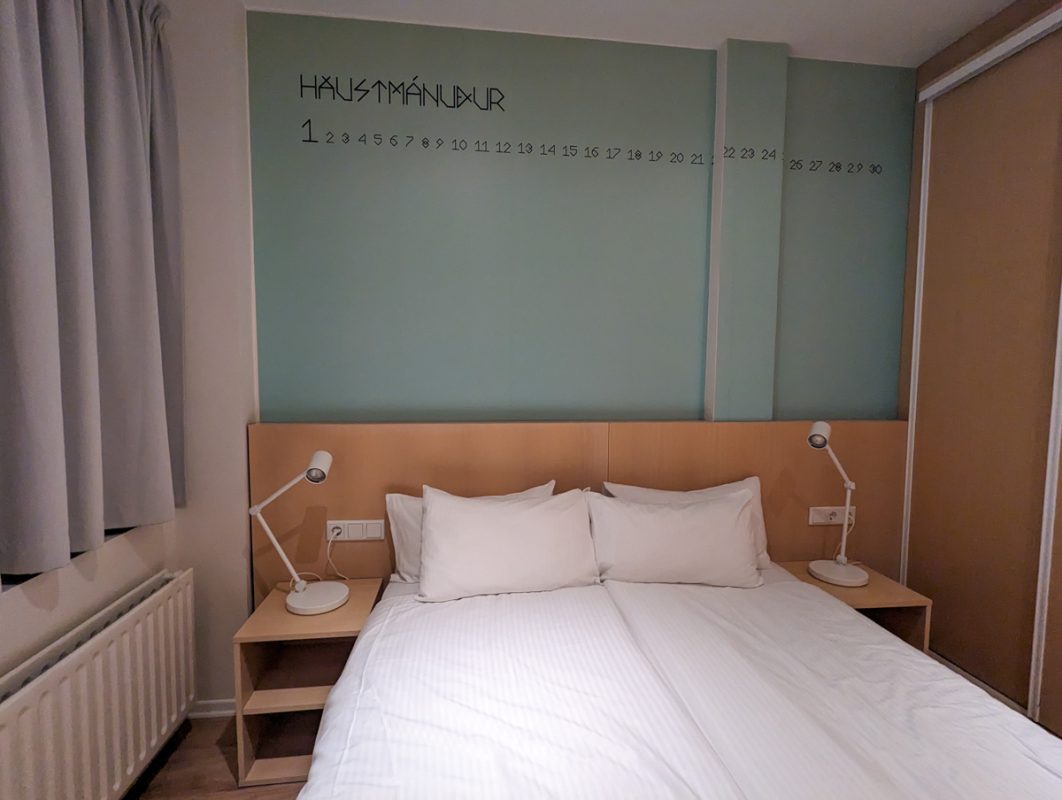
We stayed at Reykjavik Lights by Kea Hotels, a comfortable hotel with chic, modern design. My room was dedicated to the first day of Haustmánuður, which was the historic Norse month running from mid-September to mid-October.
The room was minimalist and I could see mountain views from the windows. Tea and coffee facilities, robust heating and a rain shower were all provided.
The only disadvantage of this hotel was this it was a half-hour walk from the city centre. Frequent buses run along the road.
You can see my full review of Reykjavik Lights here.
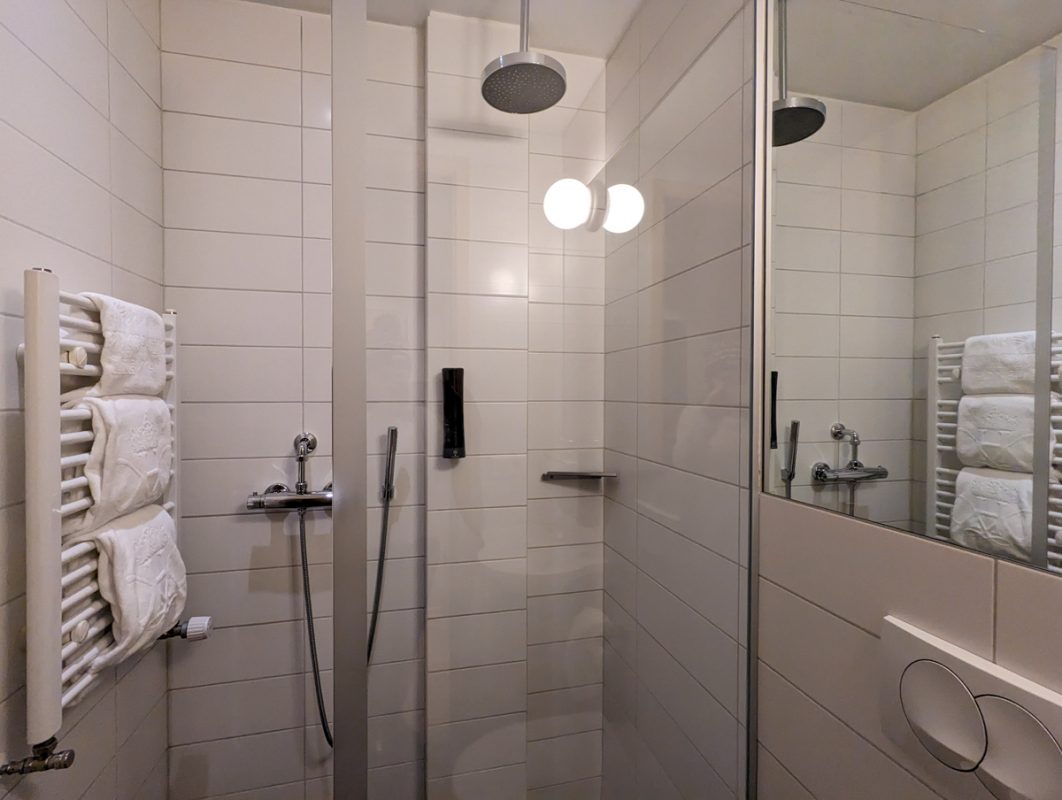
Foss Hotel Reykjavik
Foss Hotel Reykjavik is located closer to the city centre. I stopped here to get a bus and loved the welcoming entrance hall of the building.
There’s a restaurant, fitness centre and bar on-site and the rooms look modern and spacious!
It’s definitely worth considering if you want to stay somewhere that’s modern, welcoming and in close proximity to the city centre.
Kex Hostel
When I was researching cheap accommodation in Iceland, I came across Kex Hostel.
One of the most affordable rates to stay in Iceland, Kex Hostel has a large social area, a restaurant and bar.
When it’s time to sleep, you can choose from dorm and private rooms.
The hostel is located mere steps from the coastline and is right by the rest of central Reykjavik’s best attractions.
Iceland in winter itinerary: day one
Today’s all about seeing the nature that Iceland is most famous for. And you can do this on the Golden Circle.
Golden Circle

Named so because of the iconic Iceland sights that sit dotted around its parameter, the Golden Circle is probably the single-most important Iceland experience.
It’s a must-visit on pretty much everyone’s road trip itinerary of Iceland and is located close to the Iceland ring road, but if you don’t want to drive it independently in snowy conditions, don’t worry – you can see this stunning landscape on a tour.
We did this day trip of the Golden Circle, which included sights like:
- the 6,500-year-old Kerid Crater covered in snow
- the frozen Gullfoss Waterfall
- the Great Geysir and its neighbor which erupts from the earth every 6-8 minutes
- Thingvellir National Park, where you can walk between two continents and where the first Icelandic Viking parliament was held.

Many travelers choose to road trip the Golden Circle independently, but if the icy conditions that we experienced were anything to go by, I’d recommend leaving navigating the route to an experienced driver.
Plus, on this tour, you’ll get a fascinating guide who will tell you all about Icelandic culture, and geology and give some interesting insights about what it’s like to live in this unique land.
This is the tour that we did – it includes transport, a guide and all entrance fees. It doesn’t include lunch, but there’s a stop where you can purchase it separately.
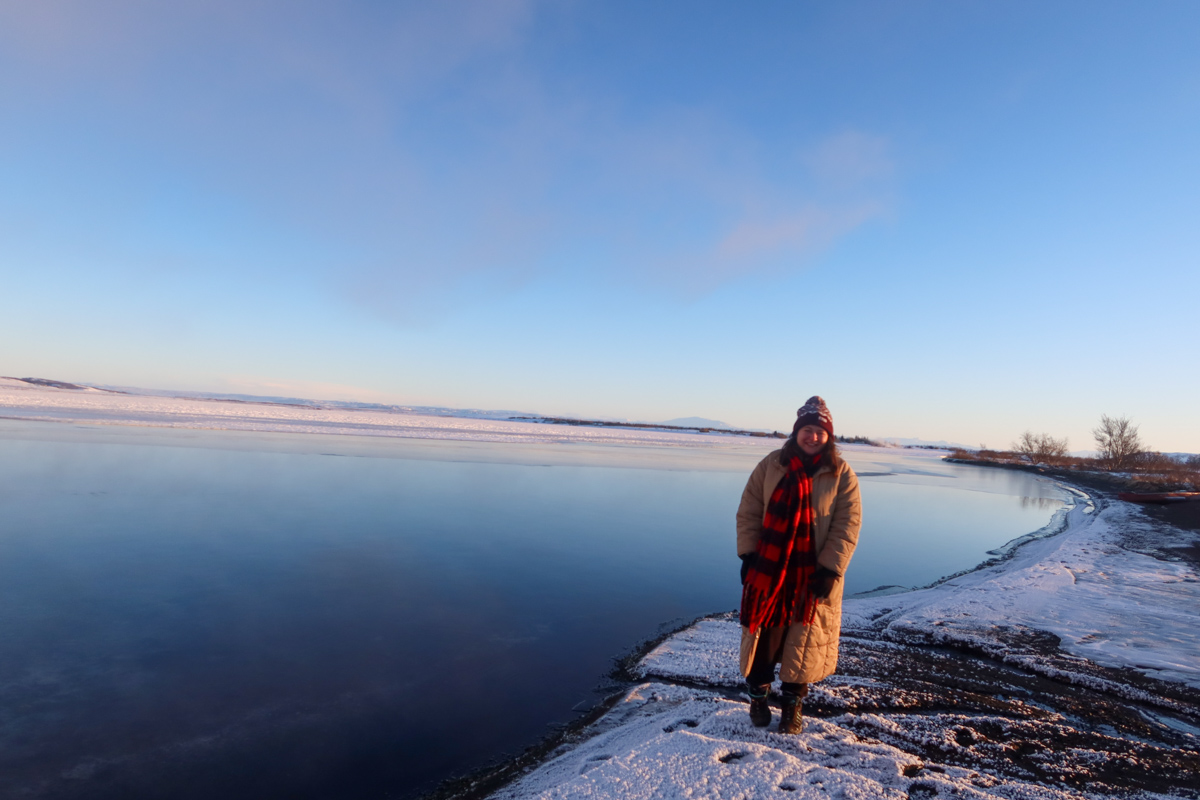
There’s another tour that also includes a stop in Iceland’s Secret Lagoon – which could be a good option if you want to spend as much time as possible enjoying the warm waters of Iceland!
You can also read my full blog post about visiting Iceland’s golden circle in winter.
If you do the tour, you’ll get back to the city at around 5:00 pm.
Grab some dinner (as we were staying at Reykjavik Lights, we went to La Madre Pizza which had thick bases and tantalising toppings) and head to your next tour, which is trying to spot the northern lights on a boat!
Northern Lights boat tour
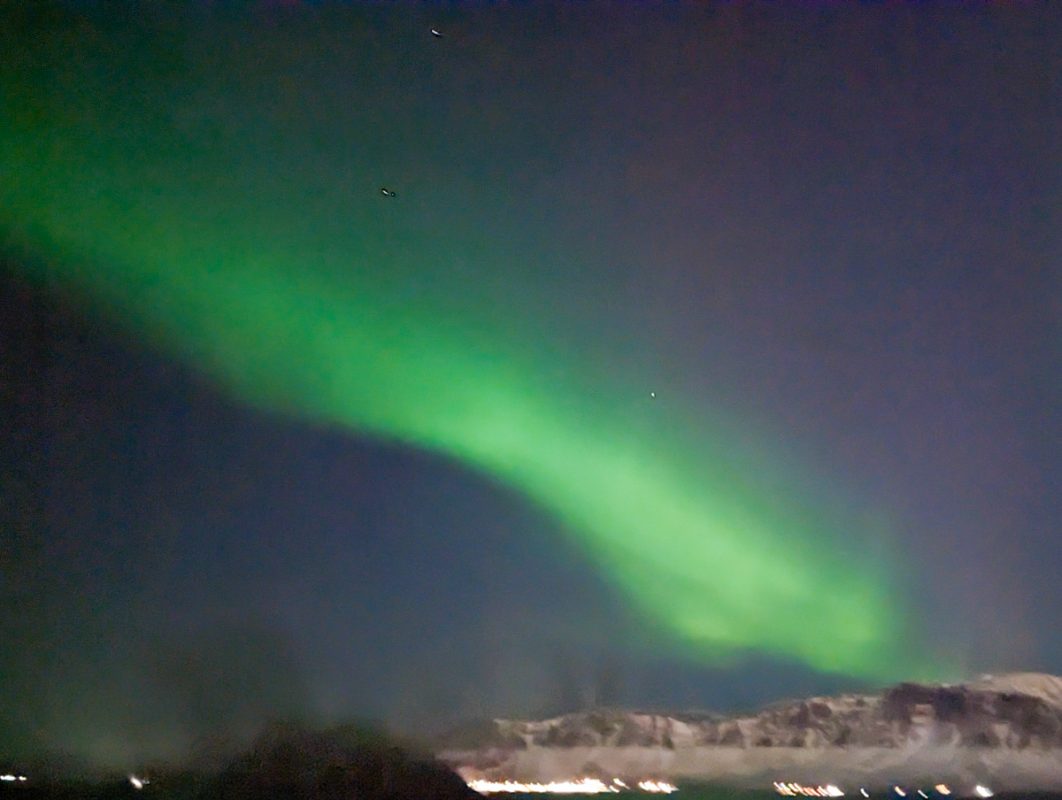
On this tour you’ll sail out of Reykjavik Harbour, away from light pollution, trying to see a glimpse of the Aurora Boleis, the enchanting northern lights which grace the skies.
There’s no guarantee that you will see this solar activity (although part of the reason I recommend scheduling the tour for your first day is that you’ll be able to go out and see them again, free of charge, if you can’t see them on the first night!), but the country does have one of the highest incidences of them in the world, so you may well be in luck!
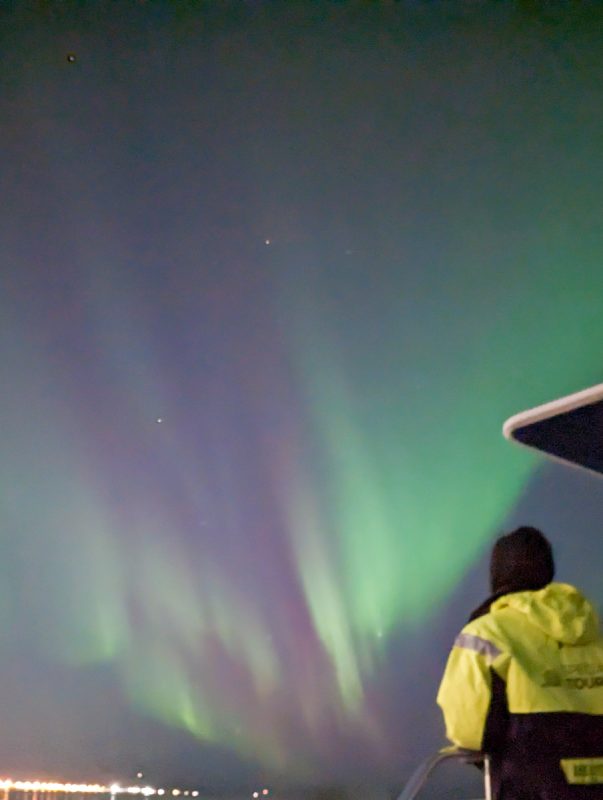
We did this tour and were incredibly fortunate – pretty much as soon as we left the harbour, we saw the dancing lights, which only intensified the closer away from the city we got.
By the time the boat started turning around and heading back, the lights were green and pink and were moving around all over the place!
You can book onto the same tour, which includes boat transport, a knowledgeable guide, bar service (chargeable – we enjoyed a hot chocolate each to warm up after spending time on the outside viewing area!) and a hotel pick-up option, by clicking here.
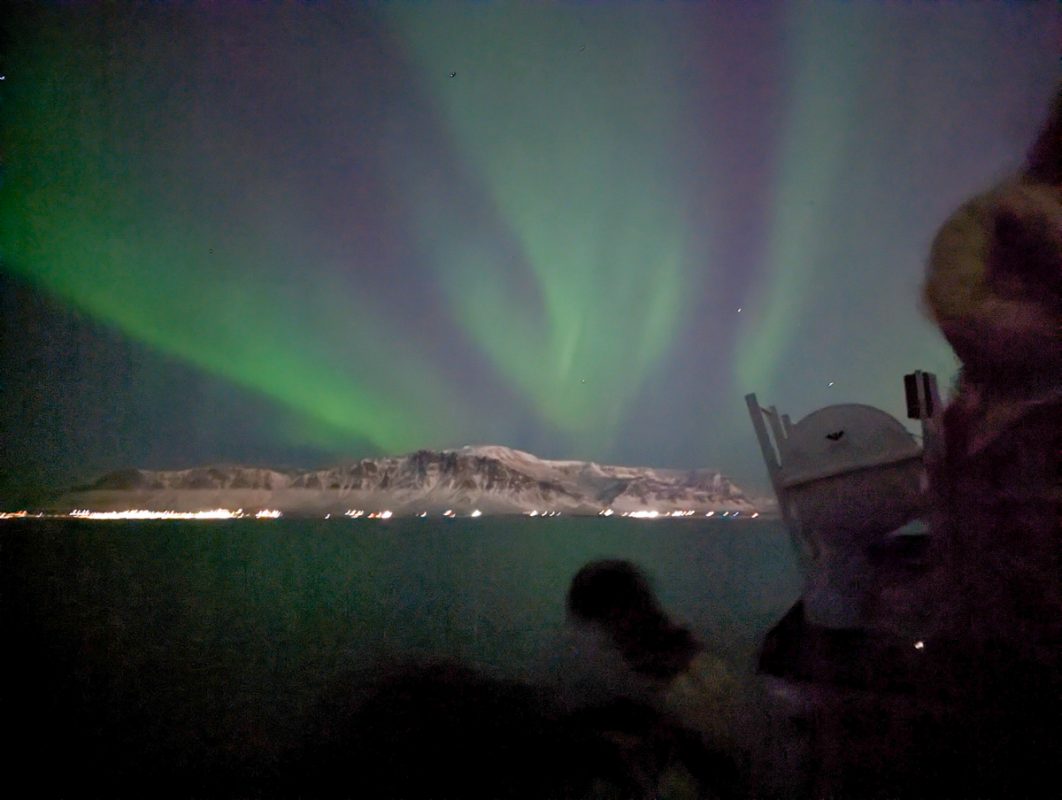
See my full blog post about witnessing the Northern Lights in Iceland in January.
Winter in Iceland itinerary: day two
Day two is all about learning about the fascinating country and relaxing in a spa!
Sunrise walk at the Sculptures and Shore Walk

The Sculptures and Shore walk runs along Reykjavik’s coastline. It’s named so because of the statues that line the street, including the Sun Voyager statue.
This is often thought to represent a Viking ship, but it’s actually an ode to the sun; it represents how, even after the darkest of winters, the sun always shines again.
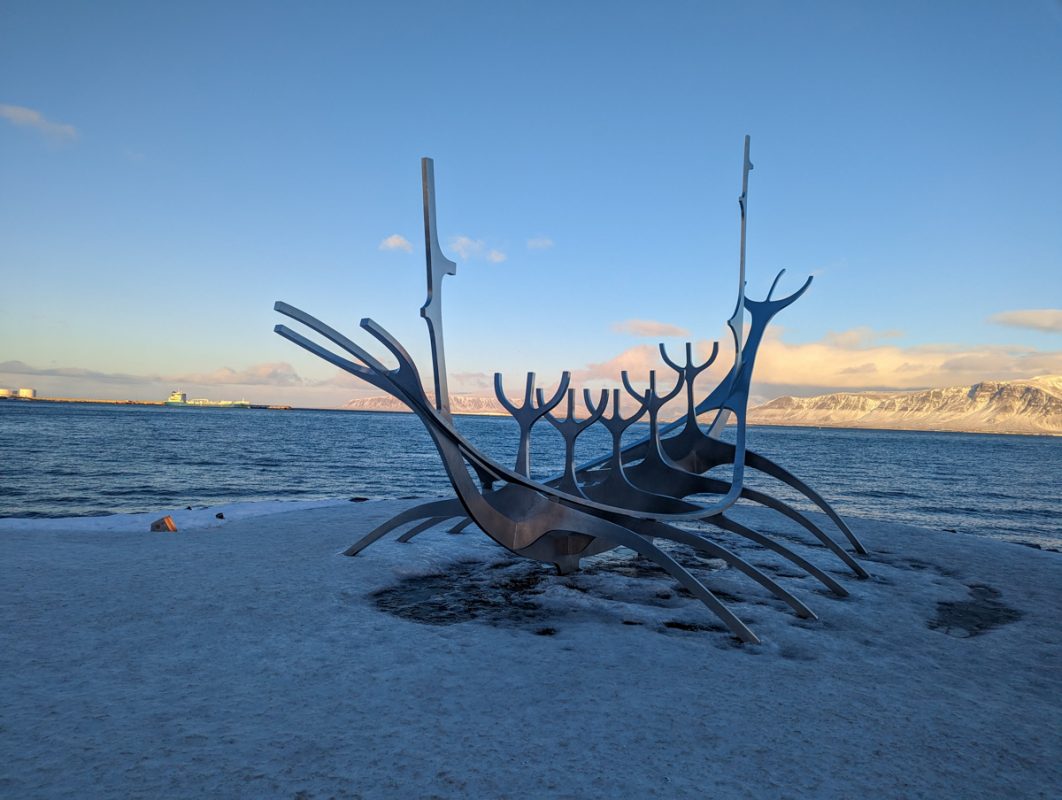
Although, if you have an experience like I did in the winter season, you’ll see how the sun can indeed shine in the winter!
Catch sunrise while you amble along the walk, taking in the mountains in the background and seeing the sky turn all colours of pinks, yellows and oranges as the sun kisses the sky.

Next up, a museum!
Depending on what time you wake up and when you book your Blue Lagoon or Sky Lagoon experience (tips on that below!), you might choose to visit the National Museum of Iceland, Perlan or both!
Here’s a bit of information about each.
National Museum of Iceland
This place needs no explanation!
It’s a celebration of Icelandic nature and culture, and seeks to explain the country’s foundings and development.
If you’re interested in history, this is the one to visit.
Perlan
Perlan is also an Icelandic museum, but with a slight difference. The exhibition is called “wonders of Iceland”, and it focuses on all the natural phenomena that make Iceland so unique.
Here, you can see a simulation of the northern lights (and learn how to photograph them!), walk through a man-made ice tunnel and see virtual displays of some of the marine life that live in Reykjavik’s waters.
You can pre-book tickets for Perlan here.
While you can also buy them at the door, pre-booking will ensure that you can go at your desired time slot and reduce the risk of tickets being sold out (rare in winter, but it does happen!).
It’s a little way from the city centre, so that saves you travelling all the way there for nothing!
Sky Lagoon and Blue Lagoon

Next, I recommend visiting the Sky Lagoon or Blue Lagoon.
If you only have three days in Iceland, you won’t get the chance to visit both, but you can read the comments
Sky Lagoon vs. Blue Lagoon: which is better?
| Sky Lagoon | Blue Lagoon | Winner | |
| Distance from Reykjavik | 30 miles/ 50 kilometres | 5 miles/ 8 kilometres | Sky Lagoon is definitely closer – although Blue Lagoon is close to the airport. |
| Cost | Rates are around $70 for a ticket and $90 for a tour with transportation. | Rates are about $90 for a ticket and $130 for a tour with transportation. | Sky Lagoon comes out cheaper, largely because it is closer to the city centre. |
| Amenities | Famous for a seven-step spa ritual which is rooted deep in Icelandic culture. Packages include a free drink and towel. | Enjoy a spa with geothermal water, a bar with complimentary drinks and a face mask bar. Premium packages include towel dresses, mud masks and more food and drink. There’s also the option to upgrade to the spa facilities. | Both have similar amenities, although Sky Lagoon probably wins due to having a |
| Surroundings | Enjoy coastal, rocky views as you weave in and out of the different areas of the Sky Lagoon. It’s a spectacular place and you won’t | See epic vistas of the lava fields and bright blue water. | Both are beautiful – Sky Lagoon has an incredible coastal backdrop whereas Blue Lagoon is isolated (with chances of seeing the northern lights if you’re there in the evening) and rugged. |
| Amount of people | Sky Lagoon is smaller than Blue Lagooon, so it can feel quite busy | Blue Lagoon is a lot bigger, but it is more popular. However, entrance times are staggered throughout the day. | Blue Lagoon wins this one due to its size. |
| Experience | Sky Lagoon is a fantastic new spa experience close to Reykjavik. | There’s nothing quite like the Blue Lagoon! It’s one of the most famous attractions in Iceland. | Blue Lagoon is more famous, so it wins on this round – although Sky Lagoon is getting more and more popular! |
Blue Lagoon
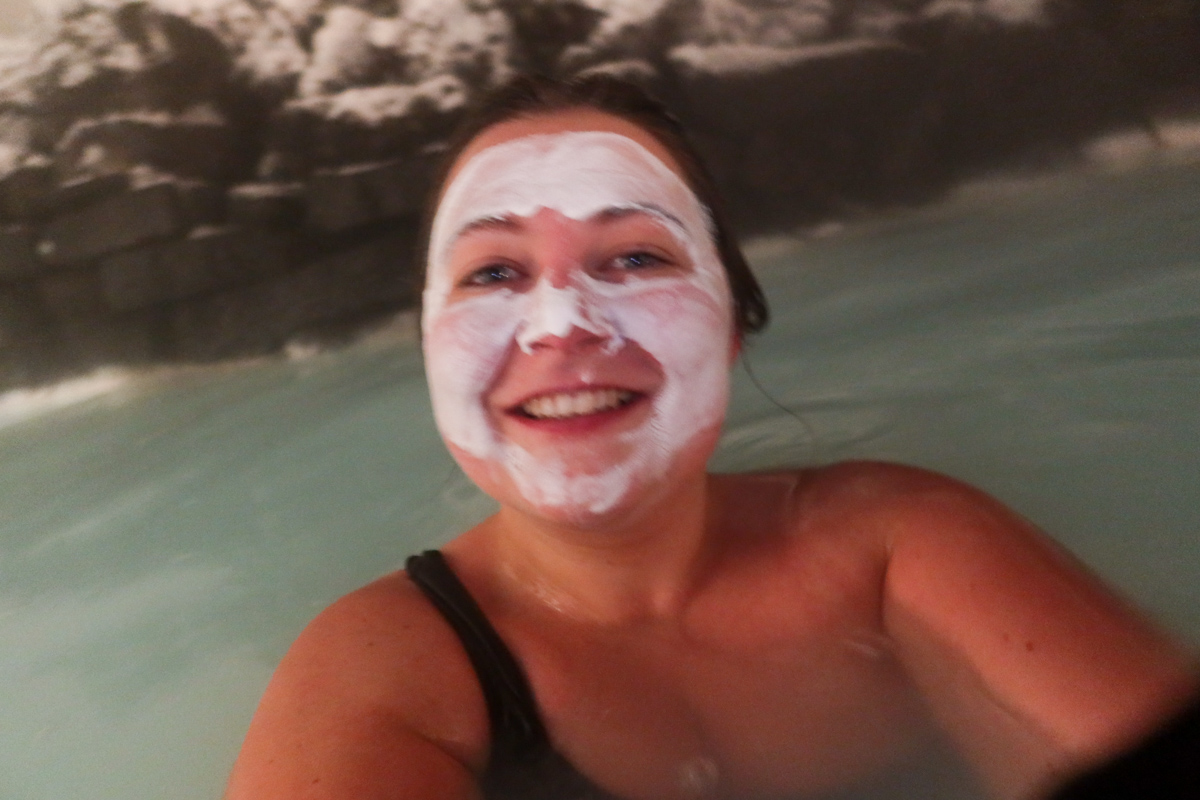
A warm pool of water sitting in the midst of a volcanic atmosphere, with the option to kick back and enjoy a drink, relax with a mud mask or unwind in the spa facilities, Blue Lagoon is the ultimate place to visit if you want to relax in a warming atmosphere at the end of your first day in Iceland in the cooler season!
The Blue Lagoon is famous for being enriched with minerals and silica, which has enormous health benefits.
The tour that we booked (this tour) includes spending time in the bright blue geothermal water while taking in the rugged landscape around you, a free drink, a complimentary face mask and use of a towel.
It also includes transport to and from Reykjavik.
If you do the Blue Lagoon tour, bear in mind that it will take at least an hour to get there. However, you can easily spend a couple of hours at the spa; most tours have flexible transport, which means that you can take any bus back to the city centre.
Just be mindful of when the last bus of the day is; for us, it was just after 8:00 pm. If you miss it, you could be in for a very expensive taxi ride back to Reykjavik!
Of course, if you have your own vehicle, you could drive to Blue Lagoon yourself! You must still book in advance.
Here’s my full blog post about visiting the Blue Lagoon in winter.
Sky Lagoon
Sky Lagoon is another option if you’re looking for somewhere that’s close to Reykjavik to enjoy Iceland’s iconic geothermal waters.
This lagoon only opened back in 2021, and it’s a lot smaller than the Blue Lagoon – although it’s generally less busy.
It’s famous for a seven-step spa ritual, which includes the following:
- Relax and unwind in the lagoon
- Take a cold plunge
- Head to the sauna, taking in the views
- Experience the cold fog-mist
- Have a relaxing body scrub
- Head to the steam room
- Shower and head back to the lagoon
There’s also a bar on-site.
Both Blue Lagoon and Sky Lagoon are among the best tourist attractions close to Reykjavik, but if you only have 3 days in Iceland you’ll probably only have the chance to go to one.
I’d maybe recommend Sky Lagoon as it’s closer to the city centre, but Blue Lagoon is definitely more iconic.
Iceland winter itinerary: day three
It’s your last day in Iceland already!
You’ve already ticked off some of the big bucket list attractions, and I’d recommend spending this day getting to know Reykjavik better.
With cultural and historical attractions, beautiful views, street art and cosy cafes, it’s a fabulous winter city break.
However, if you’d rather do another tour and see some more of Iceland’s nature, check out my suggestions for other tours in the next section!
Here are the best things to do in Reykjavik in winter:
Laugardalslaug
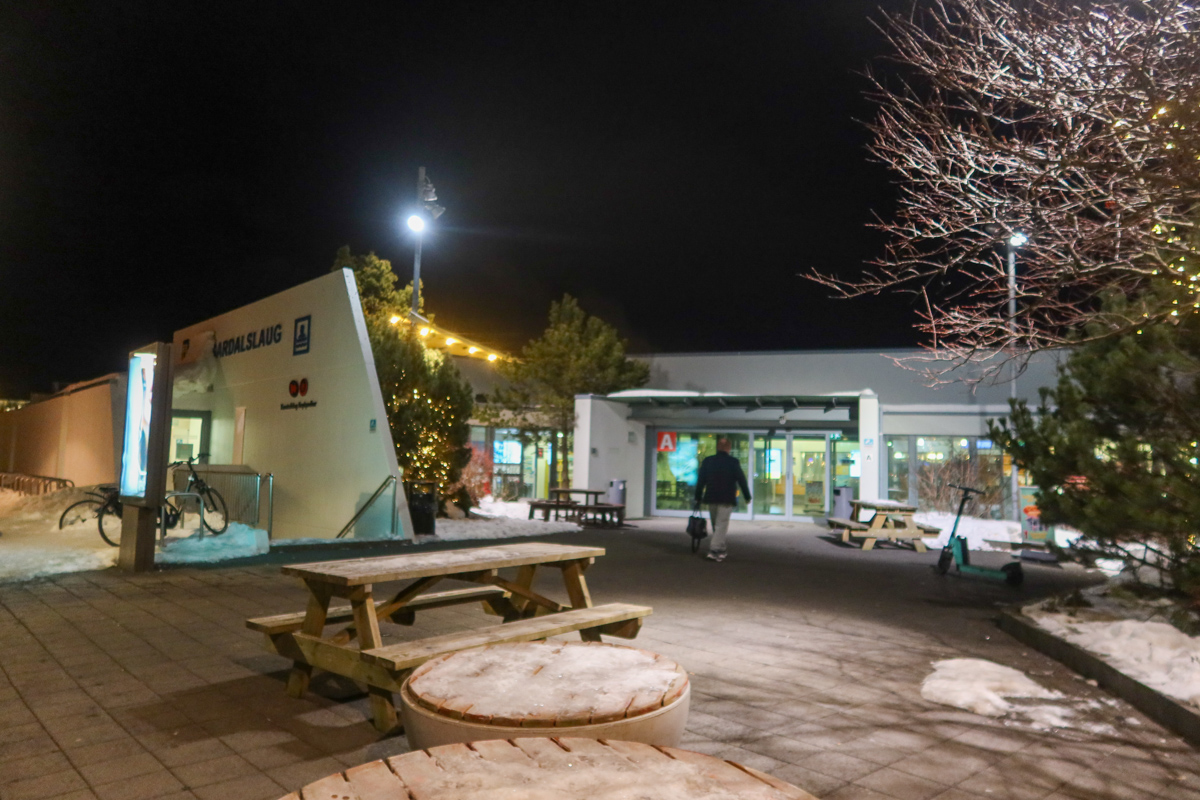
Start your day by bathing in the waters of Laugardalslaug. This is a local thermal pool; it’s heated to 28°C/ 82°F, and while it’s certainly chilly getting in, you’ll quickly warm up.
If the main pool is too cold for you, there are hot tubs on the side which reach temperatures of up to 44°C/ 111°F.
I went to Laugardaslag on the morning of my last day in Iceland, arriving just after it opened at 6:30 am. The sun wouldn’t rise for another few hours, but I loved the experience of swimming outdoors in the dark and freezing weather.
There were barely any other tourists around, and it felt like a truly local experience.
Climb to the top of the Hallgrimskirkja

Next, summit to the top of the Hallgrimskirkja! This unique building is supposed to represent Thor’s hammer. Inside, it’s quite a bare cathedral (although the organ is impressive), but you can take an elevator to the top of the church tower for a viewing platform over the city.
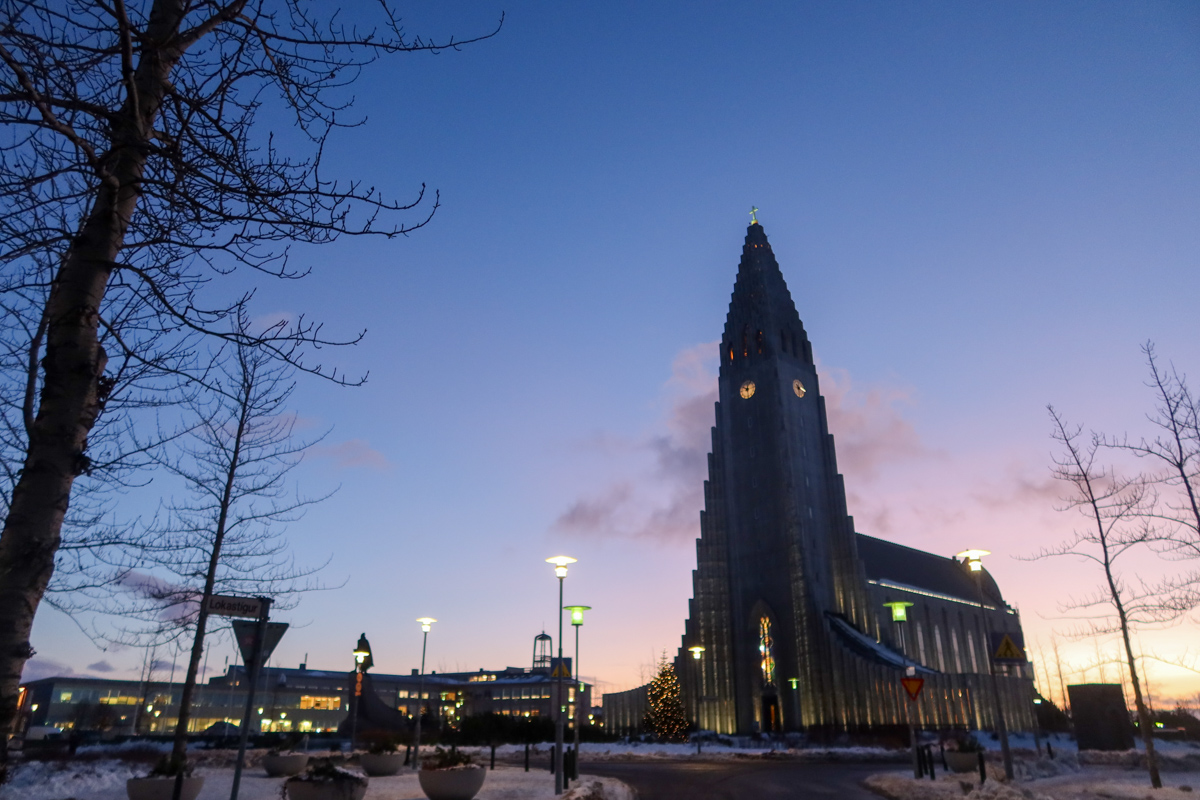
From here, you can see Reykjavik’s coastline, the surrounding Icelandic countryside and the entire city center.
The church opens at 10:00 am; I got there about 10:20 and there was already a queue, so I recommend visiting as early as possible and taking in the sunrise from the viewing platform.
Walk down Rainbow Street
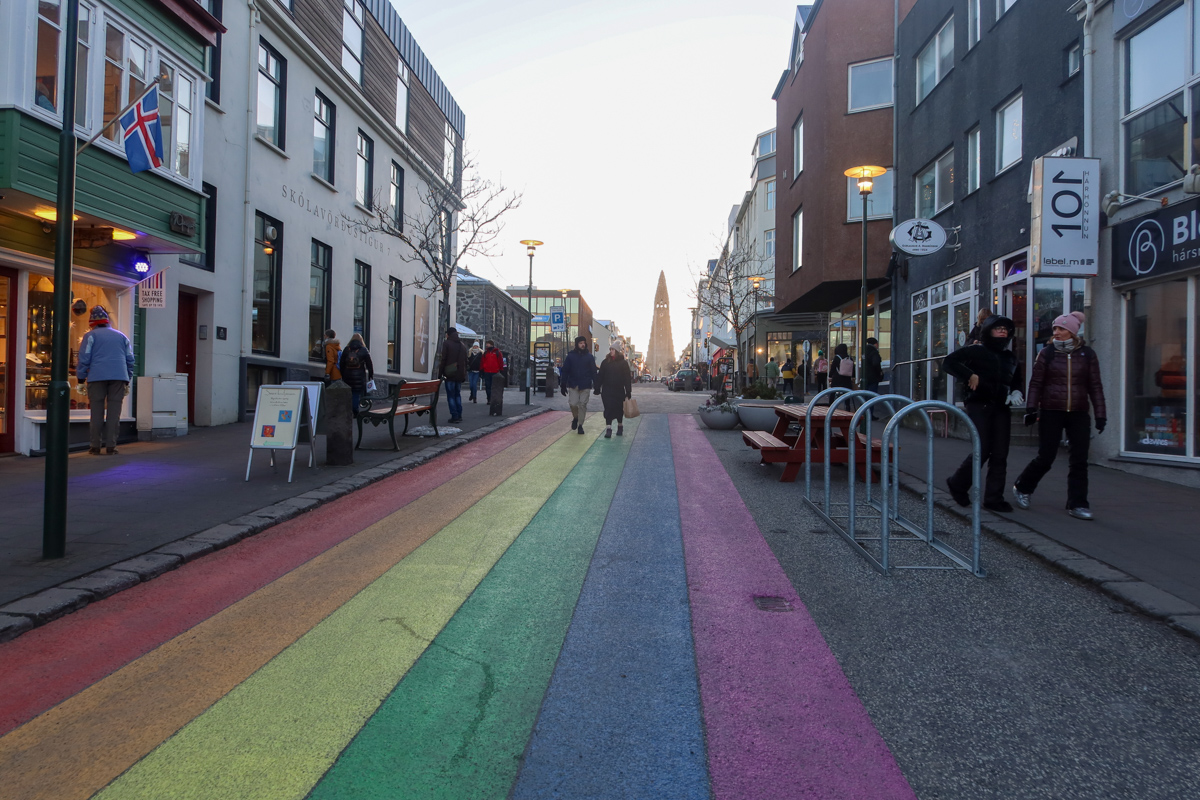
From Hallgrimskirkja, walk down Rainbow Street (otherwise known as Skólavörðustígur Street), which was decorated so to show solidarity with Iceland’s LGBTQIA+ community (and tourists!).
Iceland is one of the most LGBTQIA+-friendly countries in the world, and the capital’s rainbow street took inspiration from one in Seydisfjordur.
A local here couldn’t go to Reykjavik pride one year, so he decided to paint a road in rainbow colours and have his own parade there instead!
Reykjavik’s Rainbow Street is an excellent place for photos, with a view of the church at the end, and there are a few Nordic-themed independent shops on the road.
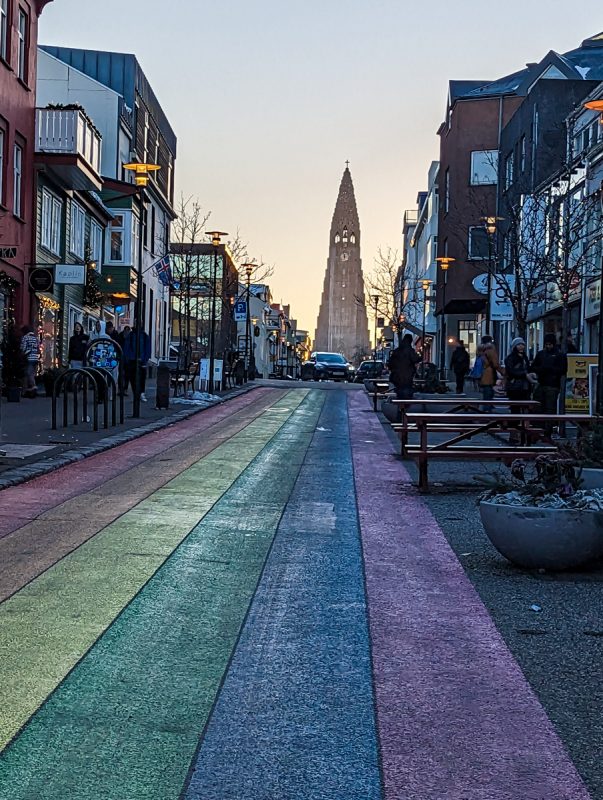
Fish and chips at Reykjavik Fish Restaurant
One of the best Iceland foods to try is definitely fresh fish.
Reykjavik Fish Restaurant serves up fresh battered fish and chips (choose from sweet, curly or regular) along with Arctic char fillets and vegetables with garlic butter.
If someone in your party doesn’t fancy fish, there are also beef, fish, veggie and chicken burgers on offer.
FlyOver Iceland

This was one of my favourite winter activities in Iceland, and I definitely recommend doing it if you want to see Iceland’s nature but are also keen to stay warm!
FlyOver Iceland is a magical experience where you can strap into a virtual flight and then enter the panoramic views of the country’s incredible scenery. You’ll fly over destinations in all corners of the country, including some areas that are inaccessible even in the summer months.
It’s a popular exhibition with Icelandic people; some of them come out of the experience in tears because they never knew their country was so stunning!
Before the virtual flight experience, you’ll see an exhibition about traditional Icelandic countryside homes and another immersive experience about ogres. The experience takes half an hour and there’s also a gift shop and cafe on-site.
It’s best to buy your tickets in advance as they can sell out. Click here to purchase tickets on Get Your Guide.
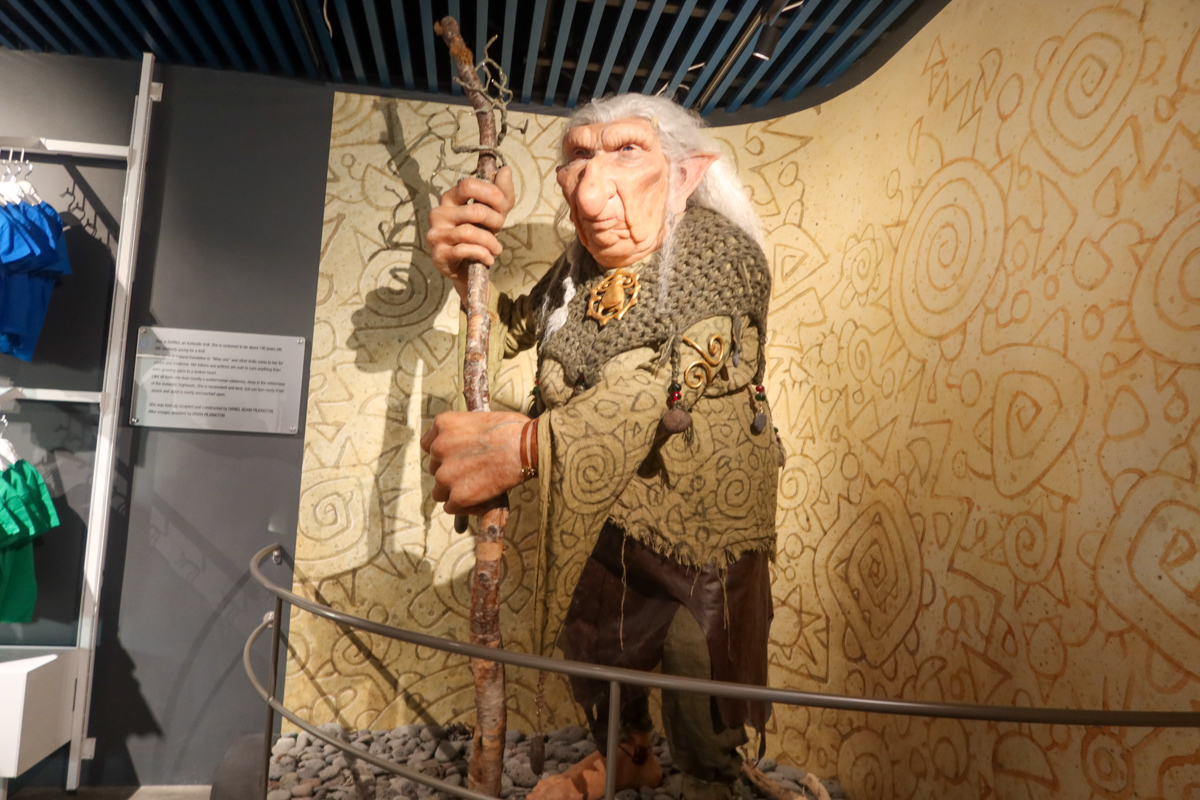
Another Reykjavik museum
Next up, visit another Reykjavik museum. There are a few close to FlyOver Iceland, that you can easily walk to from the experience. Just mind the pavements; they can be icy in the area!
Saga Museum
The Saga Museum details everything you need to know about Iceland’s viking population. Learn about the earliest settlers in the country and hear the fascinating tales about Icelandic history, exactly how the vikings told them.
Whales of Iceland Museum
If the weather isn’t good enough for whale watching tours while you’re in the country, then you can visit the Whales of Iceland Museum to learn about the marine creatures in the North Atlantic and Arctic Oceans.
Reykjavik Maritime Museum

The Reykjavik Maritime Museum goes into Iceland’s relationship with the sea. Due to it being an island, the country has a strong reliance on the sea and you’ll learn all about the close links to Iceland and the marine life at this museum!
Dinner at Dill Restaurant
Dill Restaurant was the first restaurant in Iceland to get a Michelin star, serving traditional Nordic dishes, ranging from seafood to veggie options. It’s certainly not the cheapest restaurant in Iceland, but if you want to experience true fine dining in the capital city, then it’s definitely one to visit!
Suggestions for four or five days in Iceland in winter
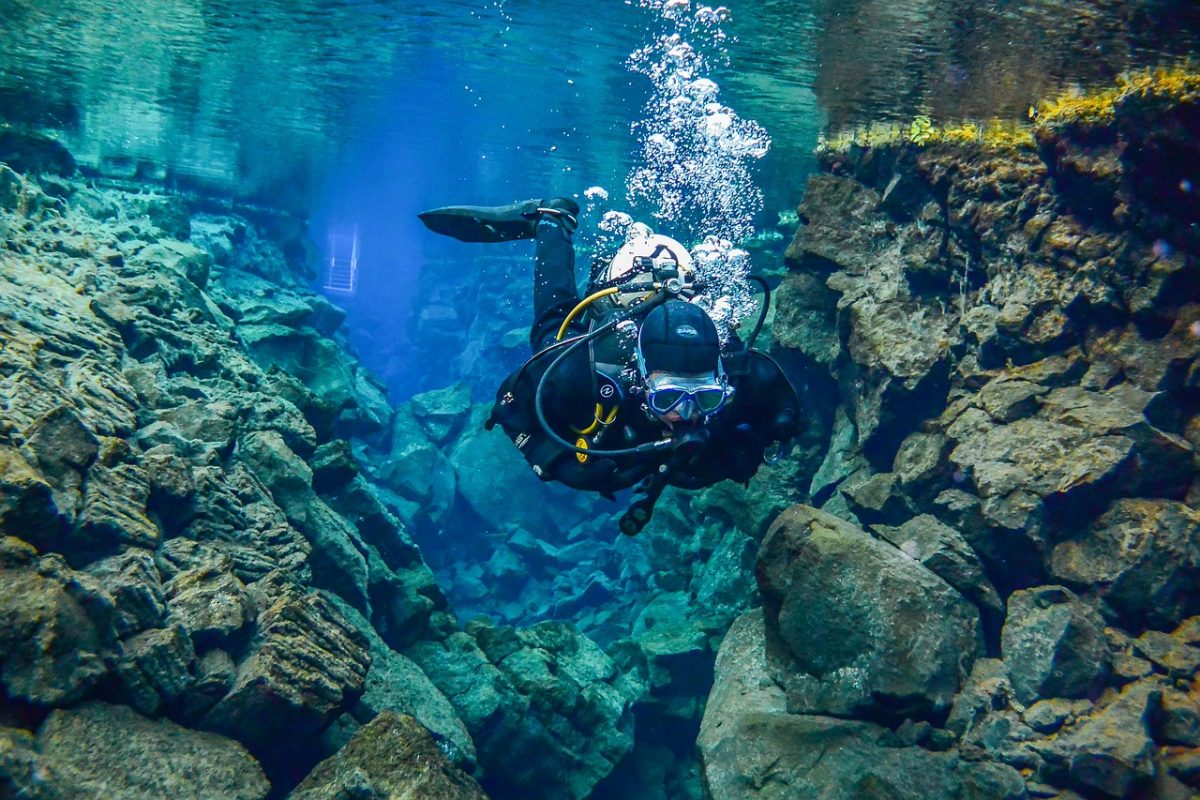
Do you have more days to spend in Iceland in the winter months?
Good for you! The country is absolutely mesmerising in this season and most tourists find themselves wishing that they had more time.
If you have an extra couple of days – or if you want to spend less time in Reykjavik than my suggested itinerary – take a look at the following tours and day trips from Reykjavik.
- Silfra snorkelling: The Silfra Snorkelling tour is the only opportunity in the world to go snorkelling between two tectonic plates (the Eurasian and the North American). This is even a perfect outdoor activity for the winter. Unlike the geothermal pools, Silfra doesn’t have hot water, but you’ll be given a dry suit, which will keep you warm. Then, you’ll snorkel through the crystal-clear water with a guide. Click here to read all about it!
- South Iceland tour: This tour takes you from Reykjavik along Southern Iceland, to places like Diamond Beach and Seljalandsfoss Waterfall. You can also visit the beautiful village of Vik too, which is the furthest south village in Iceland. Click here for more information.
- Glacier tours: You can do tours to Sólheimajökull Glacier and Langjökull Glacier, where you can either trek in an ice cave, go glacier climbing, drive a super jeep or trek across the glacier! These activities are at their best in the winter months. Click here for a super jeep tour of Langjökull Glacier or here for an ice hiking tour of Sólheimajökull Glacier.
- Snaefellsnes Peninsula: Often called “Iceland in miniature”, the Snaefellsnes Peninsula is home to powerful waterfalls, brooding coastline and Kirkjufell (which literally means church mountain): one of Iceland’s most iconic sights – and one you’ve probably seen photographed everywhere! Click here to read more about it.
What if I only have two days in Iceland in winter?
If you only have two days in Iceland in winter, I’d recommend following days one and two on this three-day itinerary, and omitting the last day.
If you don’t want to spend your second morning in a museum, you could see Reykjavik sights like the Statues and Sculptures Walk and Hallgrimskirkja before your trip to the Blue Lagoon.

How many days do you need for Iceland during winter?
More than you think! There are tonnes of things to do in Iceland in the winter months, including frosty day trips and exploring the beautiful capital of Reykjavik.
I’d recommend spending at least three full days here, but you could easily fill four, five, six or even seven days if you have the time (and money – Iceland is pretty expensive!).
What to pack for Iceland in the winter months
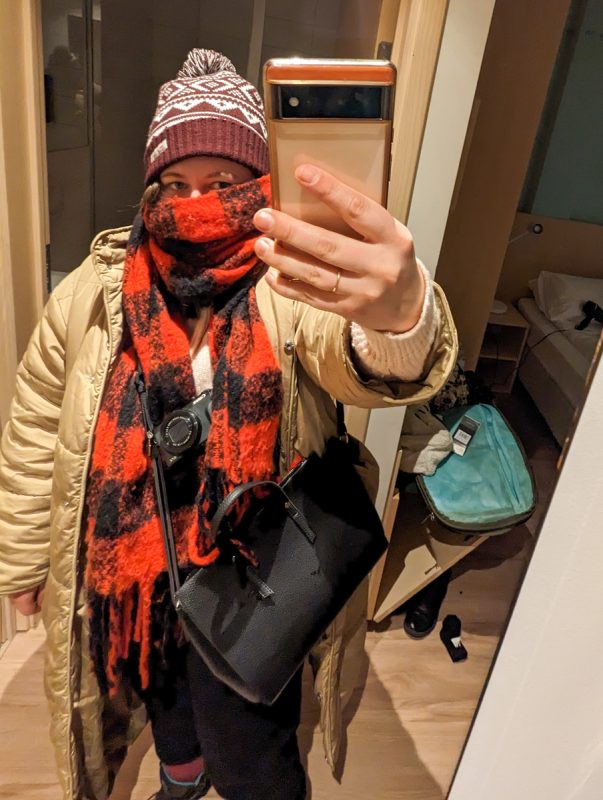
If you’re visiting Iceland in the colder season, here are some must-pack items.
You can also take a look at my winter packing list for Iceland.
- Waterproof clothing: Including a warm winter ski jacket (here’s the one I purchased from Go Outdoors) and salopettes (here are the ones I own!).
- Thermals: Click here to buy some women’s thermals from Go Outdoors (UK only) and some men’s thermals (UK only), or shop for thermals on Amazon USA by clicking here!
- Hiking shoes: You’ll need waterproof hiking boots for the colder season, to ensure that your feet stay warm and dry when walking through snow – and for ensuring that you have a good grip when walking on ice. I use Salomon boots, which are water-resistant, have a good grip and are comfortable for walking around all day. Click here to read more about them (UK only). Here are some hiking boots that I found on Amazon USA.
- Thick socks: You’ll need these to make sure that your feet stay warm! Check out these hiking socks on Amazon USA or these hiking socks on Amazon UK.
- Gloves: including thinner gloves (like these – Amazon UK/ USA) to wear underneath and waterproof ski gloves (like these – Amazon UK/ USA).
- Scarf: A long, thick scarf (like this – Amazon UK/ USA) will help to keep your face warm, or you could get a balaclava (like this one – Amazon UK/ USA)
- Woolly hat: You’ll need something to keep your head warm when out exploring! Check out this one on Amazon UK and this one on Amazon USA.
- Power banks: You’ll need these to ensure that your phone stays fully charged throughout the winter months. I use ANKER or Belkin power banks – see my recommended one here for Amazon USA and here for Amazon UK.
Planning a trip to Iceland in winter – checklist!

Just as a reminder, here are all the things that you need to book before visiting Iceland in winter.
- Flights: Look at Iceland Air, EasyJet and Play for the best deals. You could even consider booking a package with Iceland Air or TUI.
- Transfers: Book your transfer from Reykjavik Kevaflik Airport to the city centre on Get Your Guide – the link is here. Make sure that you book for the way back as well!
- Accommodation: Click here to book Reykjavik Lights, click here to book Foss Hotel and click here to book Kex Hostel.
- Tours: The tours I recommend booking in advance are below. You can click through to the name to reserve your spot:
a) Golden Circle tour
b) northern lights by boat tour
c) Blue Lagoon tour
FAQ about visiting Iceland in winter
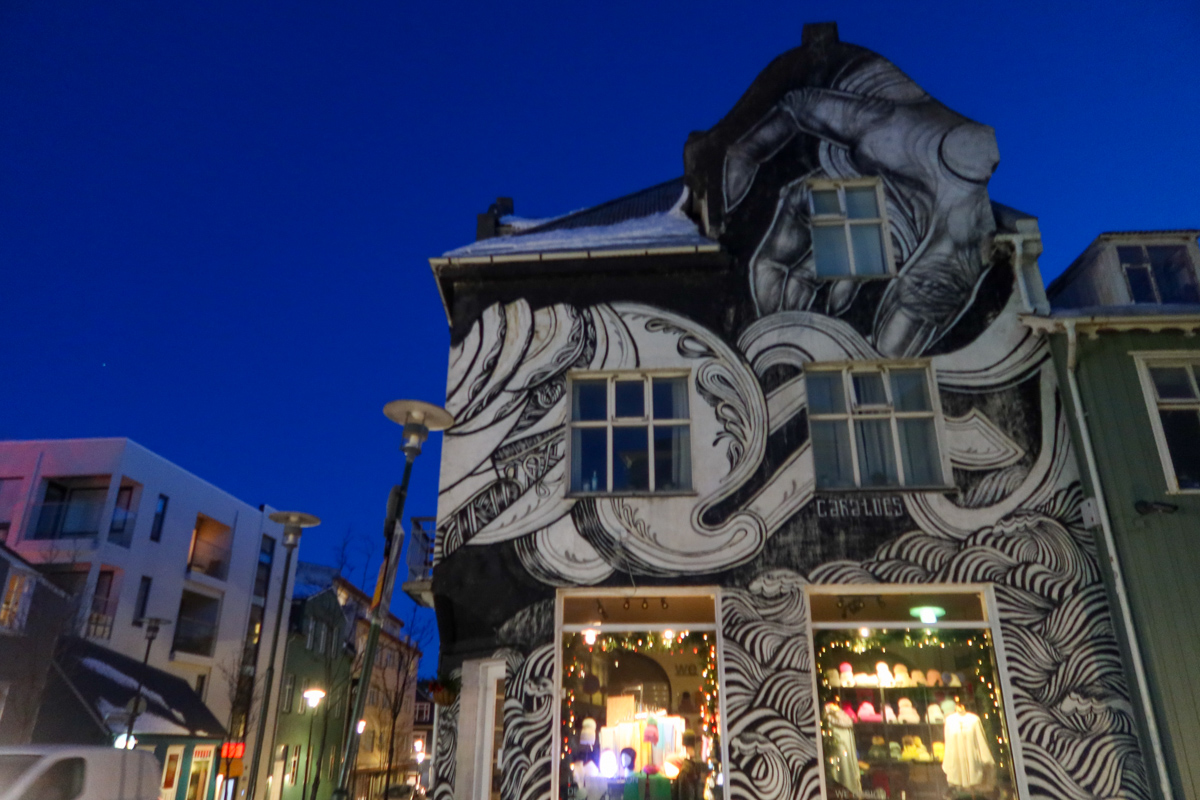
Can Iceland be done in 3 days?
There’s so much to see in Iceland that it would take months or years to see it all! But with three days, you can see Reykjavik, the Golden Circle, the Blue Lagoon or Sky Lagoon and maybe a South Iceland tour for some of the waterfalls and black sand beaches.
Is it worth going to Iceland in winter?
Absolutely! While it’s a lot colder than the summer months, the scenery looks even more beautiful when blanketed in snow and you’ll get to enjoy the striking northern lights along with sunrises and sunsets that last for well over an hour. Most of Reykjavik’s attractions are open in winter too.
Can I wear jeans in Iceland winter?
It’s not recommended to wear jeans in Iceland in winter – you’ll probably want some warmer clothes, such as a thermal baselayer on the bottom and then waterproof salopettes on the top, along with a warm skiing jacket and fleece. Jeans aren’t waterproof and you can’t wear them with other pants/ trousers.
How can I spend 4 days in Iceland in winter?
To spend four days in Iceland in winter, do the following:
- Go on a Golden Circle tour and then embark on a trip to see the Northern Lights
- See some of Reykjavik and then visit the Blue Lagoon or Sky Lagoon
- See the rest of Reykjavik’s attractions
- Go on a South Iceland tour to experience this side of Iceland
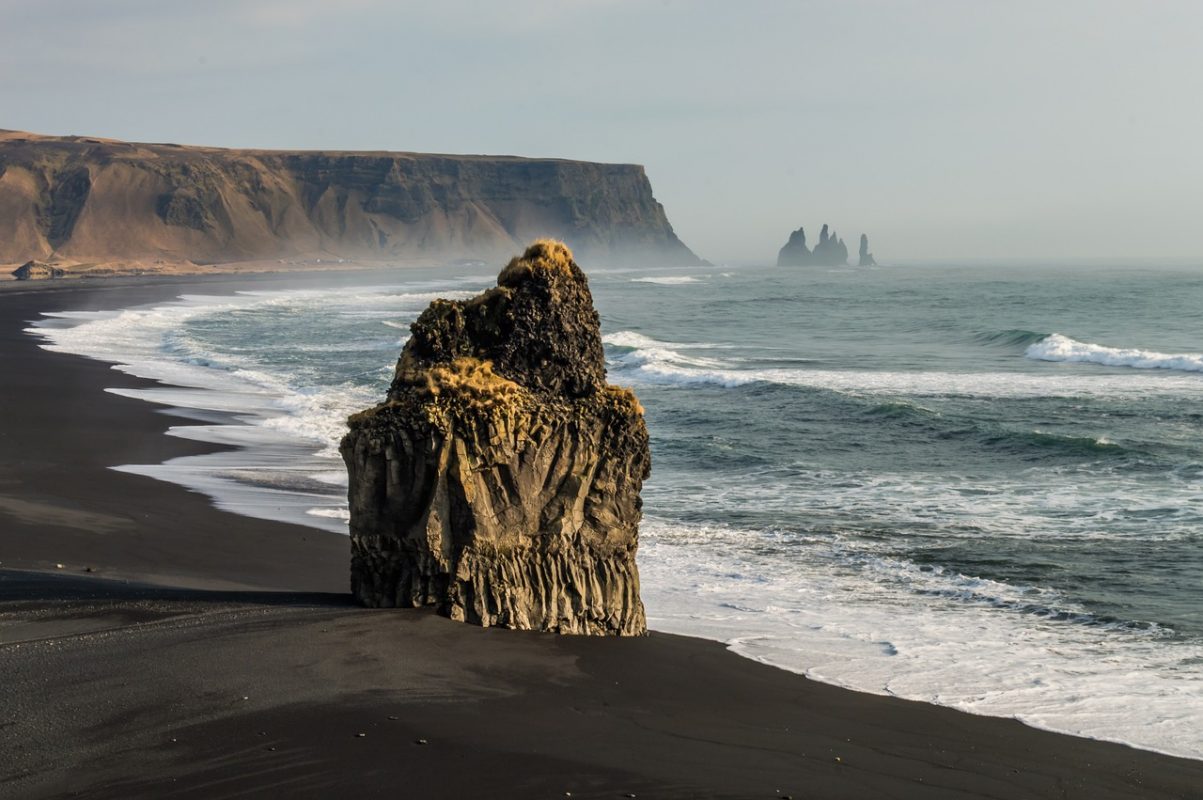
Is Iceland too cold in December?
It depends on your definition of cold! The temperatures in Reykjavik are usually around 3°C (37.4°F) / -2° (28.4°F), but they can be much colder depending on the year. If you wear plenty of layers and plan your trips so you aren’t spending too long in the cold, you should be fine.
When should you not go to Iceland?
Iceland is beautiful in any season. Lots of people avoid the cold winter months, but this quieter period almost feels like a hidden secret for those who visit, and get to enjoy cold mornings warmed by hot coffee, the northern lights and some of the world’s best sunrises and sunsets.
How many days is ideal for Iceland?
If you want to see Reykjavik and go on a few day trips, five days is probably sufficient for Iceland – although you could certainly do more trips and spend at least a week (or even more!) here. Of course, Iceland’s expensive, so it also depends on your budget.
How long are nights in Iceland in winter?
It depends on when in winter you visit! In late December, nights are 20 hours long and you’ll only see the sun for about 4 hours per day. But by March, the nights and days are both about 12 hours long as spring approaches.
Are you ready for your Iceland winter itinerary?
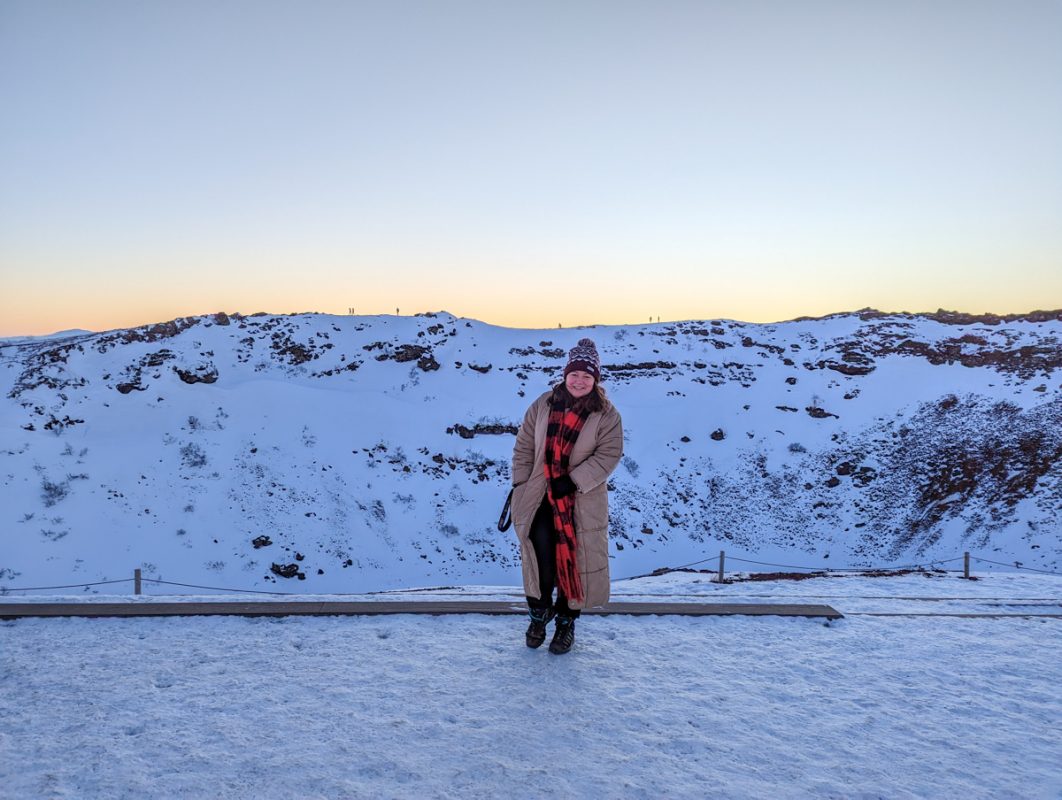
Whether you want to soak in the cultural attractions of one of the most interesting European cities and or see the incredible volcanic landscapes carpeted by a blanket of snow, this winter trip itinerary to Iceland should have shown you how to enjoy this unique country!
It’s very different to the winter sun destinations that I often recommend on this site.
But Iceland shows you how much beauty there is even in the middle of winter; visiting it in the deep and dark depths of January showed me that even in the coldest months of the year, there are still beautiful sunrises, impressive landscapes and wonderful ways to accustom to lunchtime sunrises and 3 pm sunsets.
I hope that you find Iceland travel in winter to be just as comforting and inspiring!
